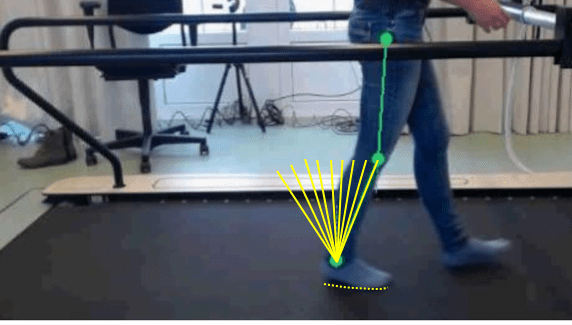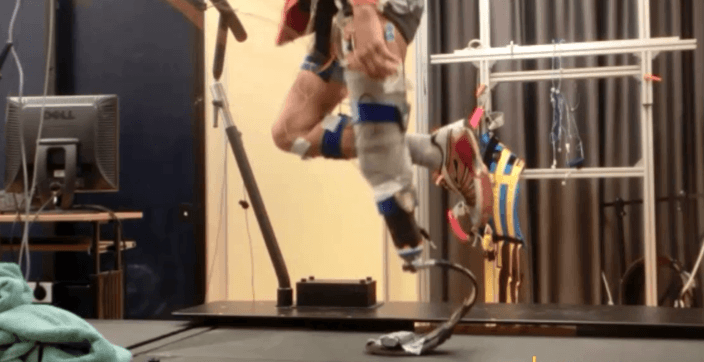Kinetic gait data to quantify socket fit and prosthetic alignment in amputees
Project Parameters
Research Partners
Related Research Themes & Projects

Prosthetic and Orthotic Dynamic Alignment for Rehabilitation
The efficacy of prosthetic feet and ankle foot orthoses depends on a proper tuning (alignment) of these components to the user. Tuning involves selecting the right mechanical properties (e.g stiffness and length) and selecting the proper orientation of the device relative to biological leg of the user. In a series of projects we aim to find clinically applicable outcome measures to quantify the effect of tuning on body progression and propulsion (e.g shank-to-vertical-angle and roll-over shape). In addition, we investigate the effect of changes in these outcomes on gait stability and economy.

Running specific prostheses and orthoses
For people with lower limb impairments their running ability can be restored or enhanced using assistive technology that supports this behavior in the leg. For amputees this application is well known as their conventional prosthetic feet are replaced by carbon blades. In a series of projects the properties of running prosthetic and orthotic blades are investigated with specific focus on the question how the interaction between user and blade affects the running performance.